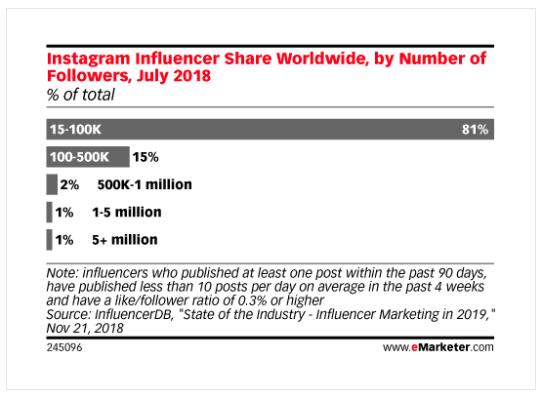Everybody desires to know the best way to make money on Instagram. We are all on it all day anyways—normally spending money instead of earning it.
In the past few years, Instagram’s endless feed of gorgeous pictures has evolved into something between a glossy magazine, your greatest friend’s taste, and a boutique store.
With more than a billion monthly users, 71% of whom are under 35, Instagram is the platform of aspiration, inspiration—and now, in-app checkout.
Read on for our greatest advice on all three tracks to make money on Instagram.
How to make money on Instagram
Strategy 1: Post sponsored content
Sponsored posts may be the first thing that comes to mind once you hear the phrase ‘Instagram influencer.’ There are more than 500,000 active influencers on Instagram as of early 2019.
The base requirement here’s a decent-to-impressive follower count and a competitive engagement rate. In other words, this strategy is for you when you are good at making strangers on the internet like and trust you.
The appeal of this technique is that it involves marketing without any of the headaches of e-commerce: it does not require you to make a product or fulfill orders. In a perfect world, all this entails is just being yourself and posting about the products, services, or brands that make your life what it’s.
Of course, there is a downside: not all brands are born equal, and it may not be Bvlgari knocking on your door at first. Plus, there is a wealth of scammers out there targeting aspiring influencers.
Even when you succeed with the sponsored content route, you will probably need to reflect on the balance between your integrity and your revenue. It is your personal brand on the line, after all. And people trust authenticity.
You will need to put every brand who needs to work with you through a rigorous “does this fit my brand?” test.
Here’s how to get began as an Instagram influencer.
Step 1: Select a niche
When you really wish to get paid on Instagram, you are going to be living and breathing your personal brand. Be sure you truly love it.
And consider how your potential partners see things. Brands will be comparing your audience to their target market. Based on recent research, 55% of brands say they prefer micro-influencers, who they perceive to have a more authentic connection with their audience.
Meaning the more particular you get, the better. ‘Vegan’ is saturated, so why not try ‘sober vegan ultra-marathon runner dad who interviews famous people on his podcast’ instead? (Or do not, because that one’s taken.)
Meanwhile, if you’re a European heiress/model with an Instagram husband, your brand is ready-made.
Step 2: Build trust & develop your audience
81% of Instagram influencers have between 15,000 and 100,000 fans. When you aren’t there yet, don’t panic. There are no shortcuts to increasing your follower count, however, there are tried-and-true methods.

Commit to posting consistently. And commit to posting content that’s exactly what your audience wants. For example, @Pedalboard_of_the_day posts a pedalboard daily for his 102,000 followers, similar to the name promises.
Step 3: Partner with brands
There are two main routes to linking up with brand partners:
- Find them by pitching them directly. Contact the brands you admire yourself and tell them what you could offer. Your brand pitch wants to provide plenty of compelling particulars about your audience and strategy.
- Help them find you by signing up with an influencer marketing platform. There are lots of these marketplaces. AspireIQ, Upfluence, and Famebit are good places to begin.
On a positive note, brands are eager to seek out effective influencers.
Step 4: Post transparently
As an influencer in America or the UK, you’re legally obligated to make it clear when you’re posting an advert. The American Federal Trade Commission’s guidelines require your disclosure to be obvious and simple to know. Meanwhile, the Advertising Standards Authority in the UK does not look after any coy allusions: say #advert, not #gifted.
To stay on the right side of the law, use the #advert hashtag above the fold (i.e., in the first three lines so people do not have to click on around to search out it.)
Even better: use the Paid Partnership tag, which Instagram made back in October 2017.

